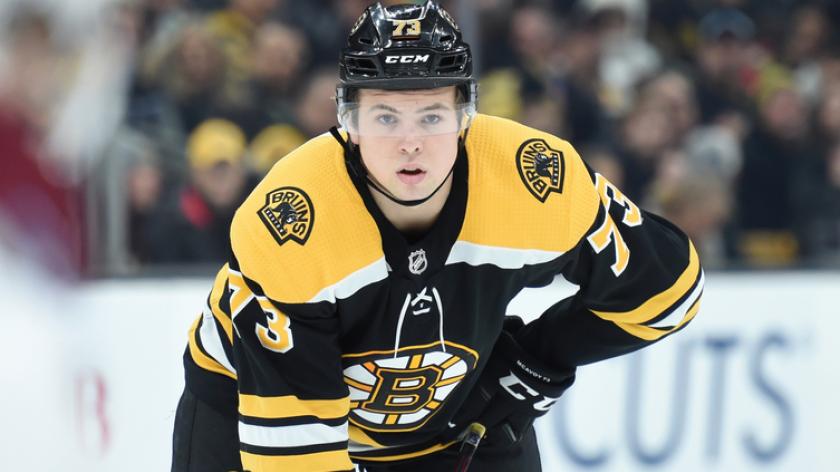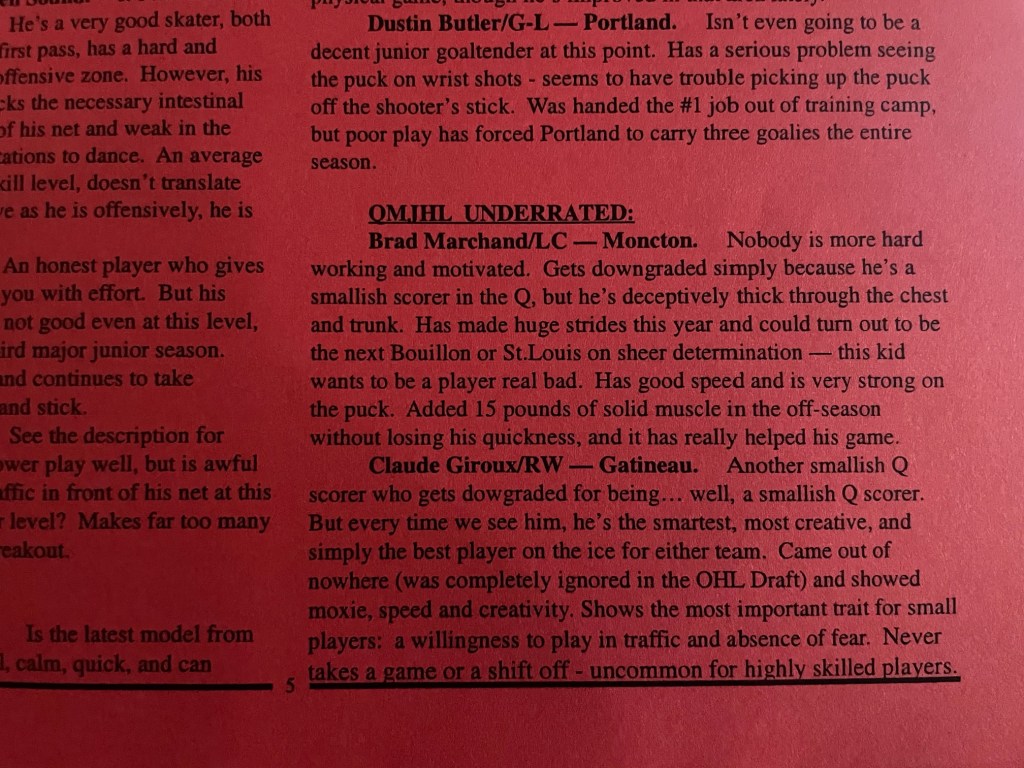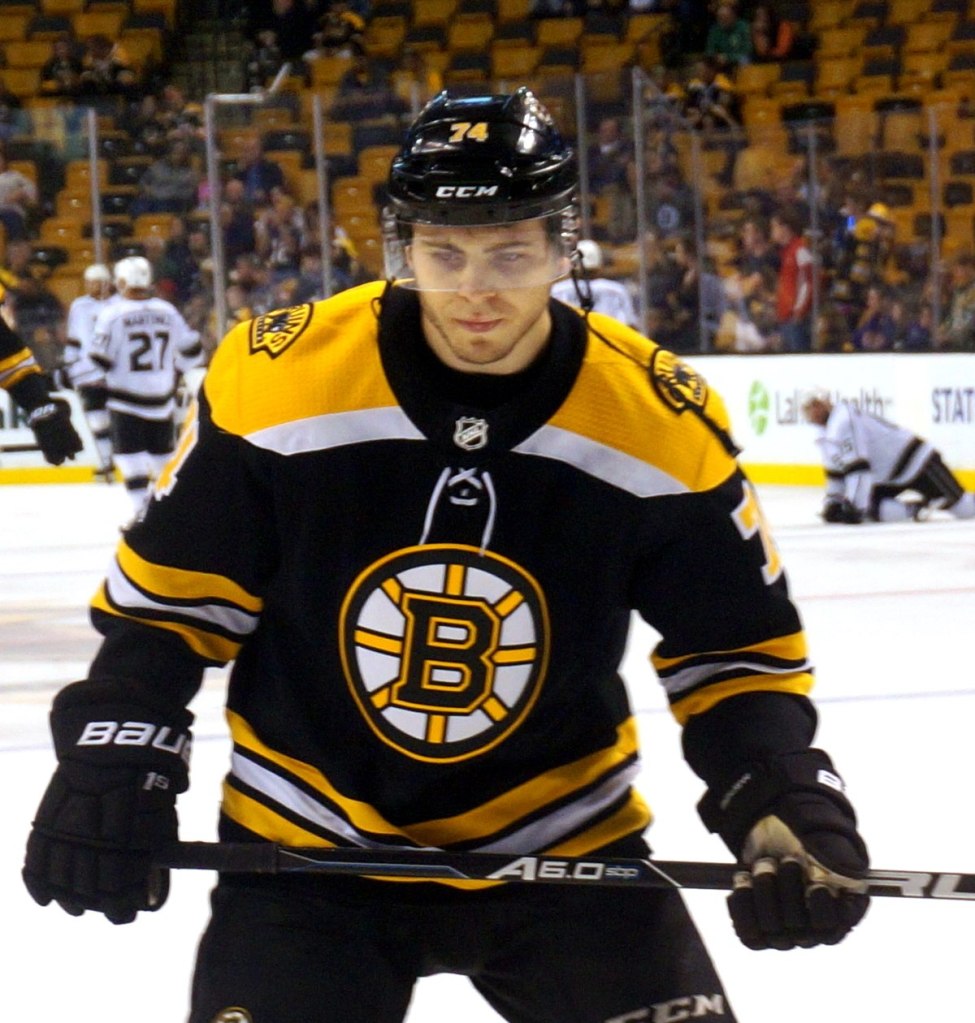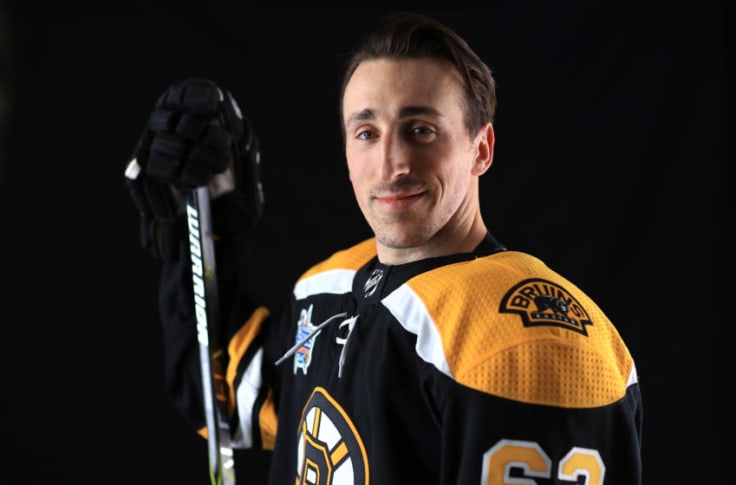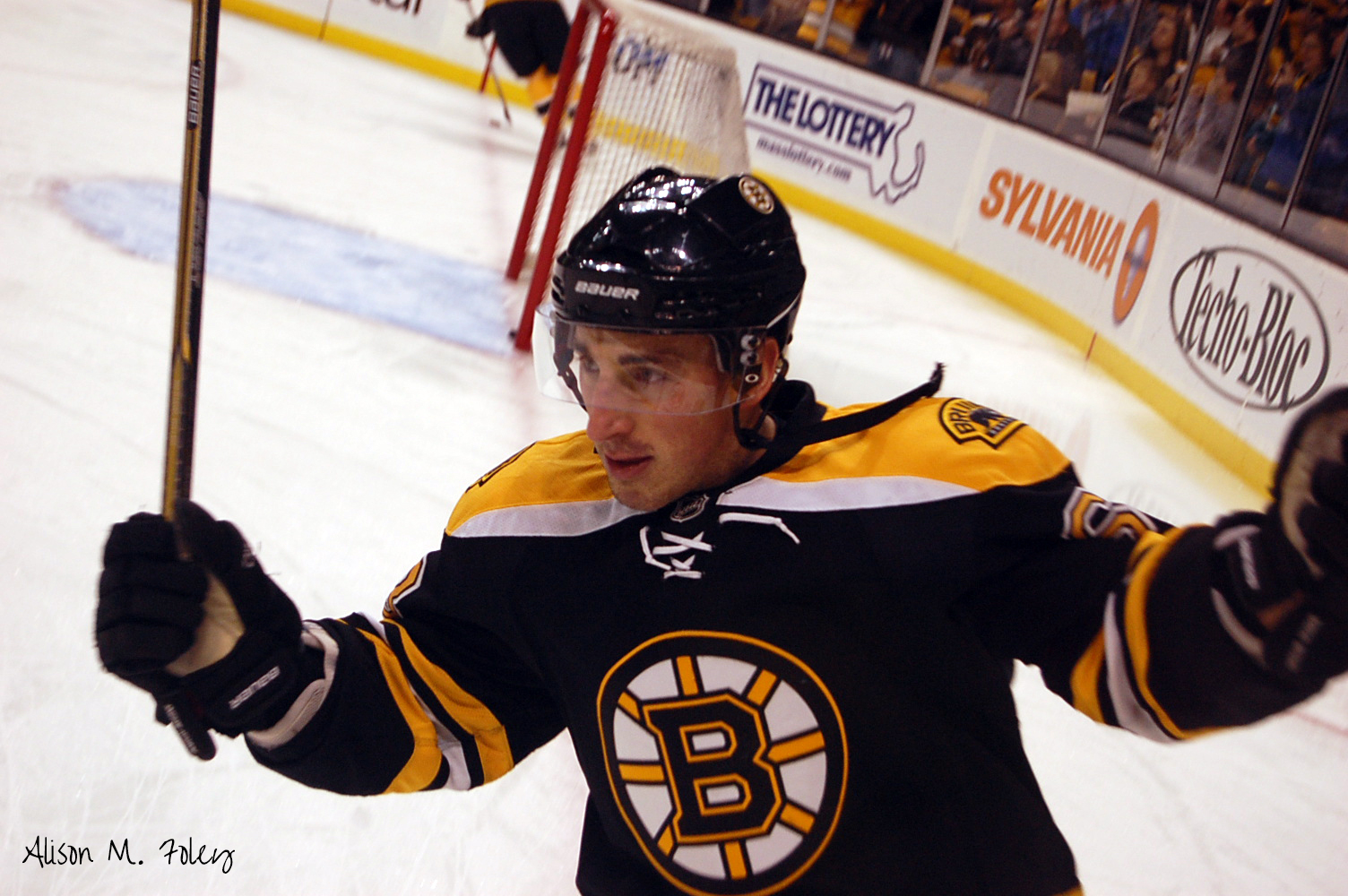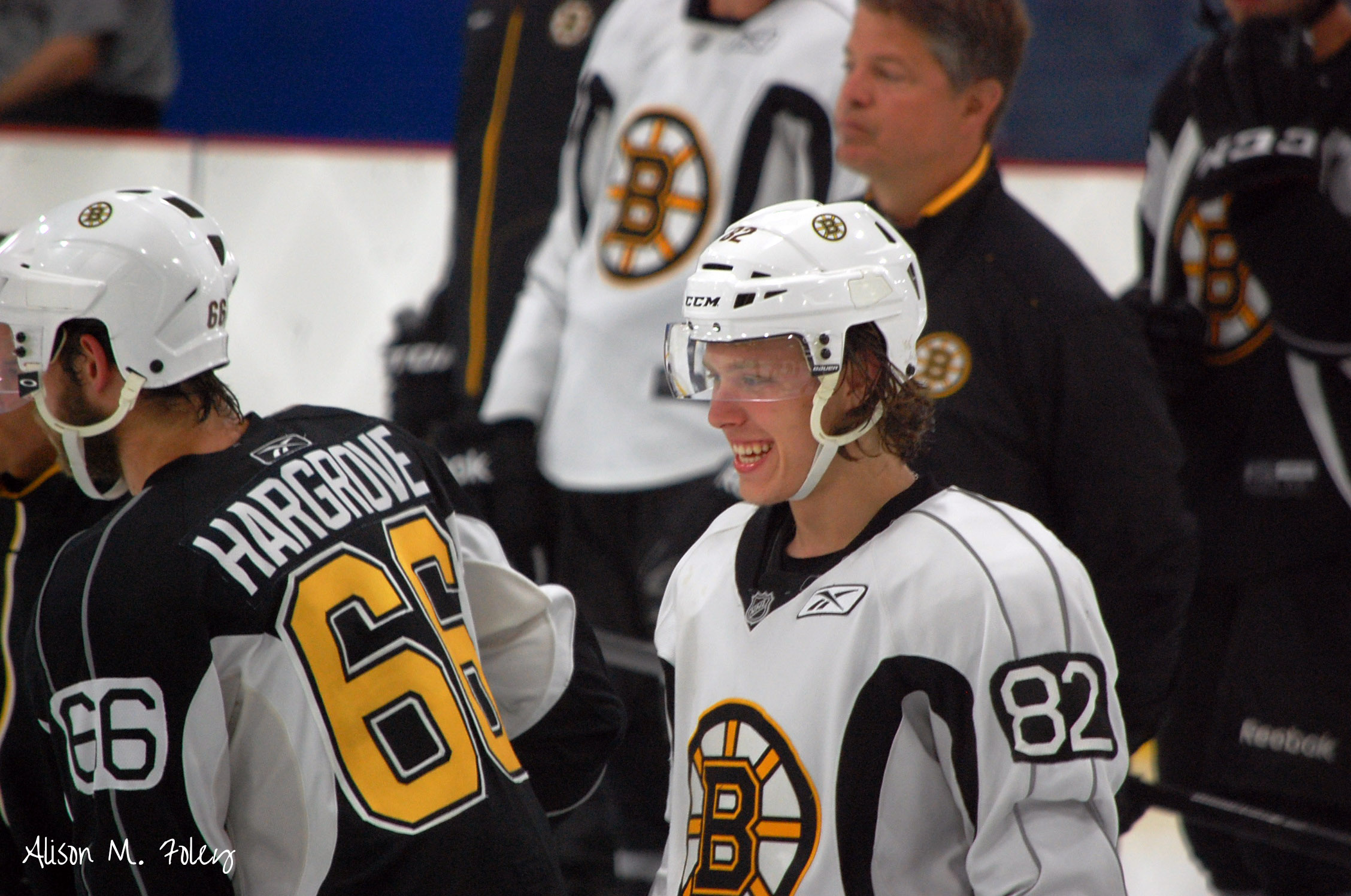
It seems crazy that it has been more than 440 days since there was a near-capacity crowd at a Boston Bruins home game, yet that was the scene at the TD Garden Saturday night as David Pastrnak’s hat trick keyed a 5-2 victory over the New York Islanders in Game 1 of the Eastern Division playoff series.
All three of Pastrnak’s tallies were shooter goals- no junk or gimmes- just smart plays by the 2014 NHL draft’s top finisher and a positive sign that whatever he was going through in a lengthy slump that saw his production fall off considerably in the regular season’s final month is over. No. 88 looks to be back to himself, and the newly-minted 25-year-old whose birthday was this week, sent a warning shot across the bow last night that you had best take notice.
Also scoring for Boston were Charlie McAvoy, who broke a 2-2 tie in the third period with a point shot that beat uber-rookie Ilya Sorokin, and an empty-netter by Taylor Hall.
McAvoy’s goal was scored through a screen set up by Nick Ritchie, who emerged from the penalty box and pursued play into the offensive zone, where he won a puck battle in the corner, then went to the front of the net. Though he didn’t draw an assist on the first strike of the postseason for No. 73, that kind of play from Ritchie is precisely what the B’s need from the big power forward.
Tuukka Rask, who posted his fifth win of spring (56th of his career), was solid in net again. He gave up the opening goal on a power play deflection from Anthony Beauvillier, and later allowed a scorching, rising point shot from d-man Adam Pelech that tied the game in the second period, but that was it.
Pastrnak’s first goal was with the man advantage, and evened the score. Getting the puck to Sorokin’s right, he showed excellent poise to not just try and fire a shot on net with defenseman Scott Mayfield in position to block it. Instead, Pastrnak changed his shooting angle while freezing Mayfield in place to provide a partial screen, then roofed the puck over Sorokin and into the net for his first of three goals. That was a pure goal scorer’s move and points to the fact that Pastrnak is back after struggling offensively and playing a generally moribund game in the first couple of games of the 2021 postseason series against the Washington Capitals.
The story of the night was the raucous Boston crowd, which got plenty to cheer about from the home club and made it be known after more than a year of not having hockey in the building (for the most part). The sounds of the fans and sheer energy and excitement was palpable on television, and one can only imagine the bedlam that went on inside the TD Garden for those present. It is all a welcome feeling, and one we should not ever take for granted again.
Here are a few additional notes/observations:
Beauvillier is a player. Not only did he quiet (briefly) the home crowd with his first period power play marker, but he played with a lot of effort and energy. No. 18 was a noticeable problem early and throughout the game. He’s skilled, very smart and just makes plays. The B’s will have to keep better tabs on the 2015 late first-round pick going forward.
Speaking of 2015 first-round picks… It is just one game, but Mat Barzal didn’t get much accomplished in Game 1. Did he even play? Oh, right- he did. He took that bad penalty near the end of the third period with this team down a pair and desperately needing a goal to make it a game. Yes, he’s an unreal talent and there is no denying six years later that the Bruins missed out by not drafting him. He’s a heck of a player, but as skilled and offensively savvy as he is, there is an inconsistency in his effort and his lack of size exposes him in playoff matchups like this one. Monday will be a new night and opportunity for Barzal to remind the Bruins that they messed up. But last night…wasn’t it, chief. And if you’re one of those folks out there who has been feeding the white noise machine nonstop since it became evident that the B’s were on the wrong side of that draft call, your silence this morning is deafening. Ok, we don’t usually like to spike the football, but in this case- we’re making an exception. Again- Barzal is a good player and the B’s blew it not drafting him. But, on one night at least, he didn’t look like a top player, and to be frank- he hasn’t been all that impactful this spring, either. Sometimes, you eat the bear. Sometimes, the bear eats you. We fully expect Barzal to make plays in this series, but it is also true to say that his performance thus far has, at best, been…lackluster.
Sorokin had that look of Ken Dryden in 1971 early on, and couldn’t help but get this “here we go again” feeling, but as time went on and the Bruins kept peppering the rookie with shots, you couldn’t help be sense the tide was turning and the B’s would take over the game. Drafted in 2014 like Pastrnak, Sorokin is highly athletic and tracks pucks extremely well. The Bruins did a nice job to set screens and get him moving, also getting some favorable rebounds. Boston handed him his first playoff loss, but he’s going to be a tough out on any given night. Kid is legit.
Connor Clifton continues to have a strong playoffs. He just plays hard and is willing to do whatever it takes to keep the puck out of his own net. He did commit a bad turnover in front of his net early on, and those kinds of things can’t be repeated often without paying a price, but he provides energy and tenacity on the back end. He’s far more the sum of his parts, especially in the postseason.
There’s a lot more we could get to, but we’ll leave it here. 1 win in the books, but the Bruins need to work on their touches in their own end and make better puck management decisions to reduce the turnovers. The Islanders are well coached by Barry Trotz and his staff- hard-working and opportunistic- the B’s can’t keep giving up possession in their own end and expect it not to come back to bite them.
In the end, you couldn’t ask for a better start for the team in round 2, or a better night for the thousands who witnessed it inside the Garden and at the area watering holes and throughout the rest of the world.
The buzz is back.
